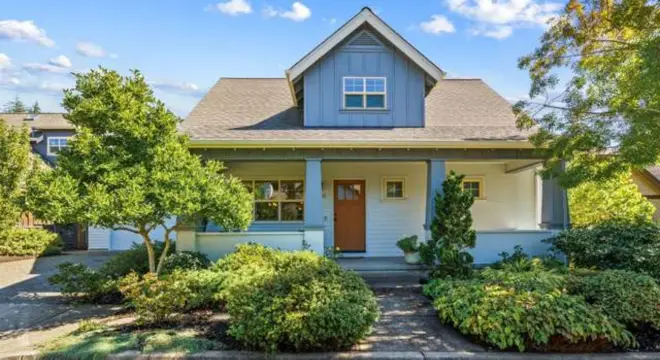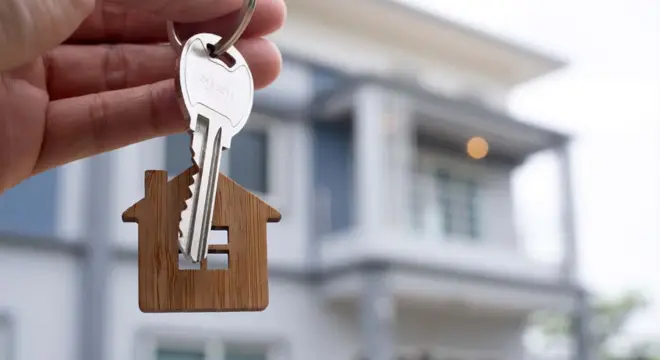Thinking of Buying an Older Home? Read These 10 Essential Tips First
I’ll be honest—buying an older home sounds romantic. You imagine charm, history, maybe a wraparound porch and some creaky wooden floors that tell stories of the past. But the age of a home isn’t just a number—it’s a roadmap to everything that might go wrong or need fixing.
When I first looked into older homes, I didn’t realize how much the construction year affects the rest: wiring, insulation, plumbing, roof materials—even the way the walls breathe. For example, homes built before the 1970s often used materials we now consider hazardous (like lead paint or asbestos), and many lack proper insulation behind those beautiful plaster walls.
So, here’s your first homework: find out exactly when the home was built. Don’t just rely on what the seller says—check city records, ask your agent for previous listings, or even dig into building permits. If the house has gone through major renovations, those might be listed too. You’ll want to know what’s original and what’s been updated.
The year gives you clues. Pre-1950s? Likely to have cast iron plumbing or knob-and-tube wiring. Built in the ’80s? You might run into aluminum wiring or dated insulation. The more you know, the better questions you’ll ask during your inspection—and the fewer nasty surprises you’ll face later.
Now I want to hear from you:
Have you ever looked at a house and thought, “Wow, this has character”, only to realize it might have a lot more hidden underneath? What’s the oldest home you’ve considered—or bought?
Tip 1: Start with the Foundation — Literally
Here’s the truth: if the foundation’s off, everything else will be too.
When I toured my first older home, I didn’t even think to look at the base of the walls or the slope of the floors. I was too distracted by the crown molding and vintage door handles. Rookie mistake.
Cracks in the walls, sticky doors, or sloping floors aren’t just “quirks”—they’re red flags. They usually mean movement underneath the house. And that can lead to big structural problems, expensive repairs, and in worst cases, a home that’s unsafe.
Most older homes settle over time. A little hairline crack? Not a big deal. But gaps wider than a quarter inch, or stair-step cracks in brickwork? That’s when you bring in a structural engineer—not just a general inspector.
Also, check the basement or crawlspace. If you notice moisture, rust on pipes, or sagging beams, those are signs that water is getting in—and water plus time equals rot. And rot spreads quietly.
In older homes, it’s common to find DIY “fixes” over the years: jacked-up beams, temporary supports, patched cement. Don’t trust these at face value. Document them, ask questions, and get a second opinion if something feels off.
Ask yourself this:
Would you rather spend on a kitchen remodel or fixing the bones of the house just to make it livable?
Don’t skip this step. Start from the ground up—literally. The prettiest home isn’t worth it if the structure can’t hold.
Tip 2: The Roof May Be Hiding More Than You Think
Most people glance up at the roof and move on. “Looks fine.” But in older homes, the roof is rarely just fine—and it’s one of the most expensive parts to replace if it’s not.
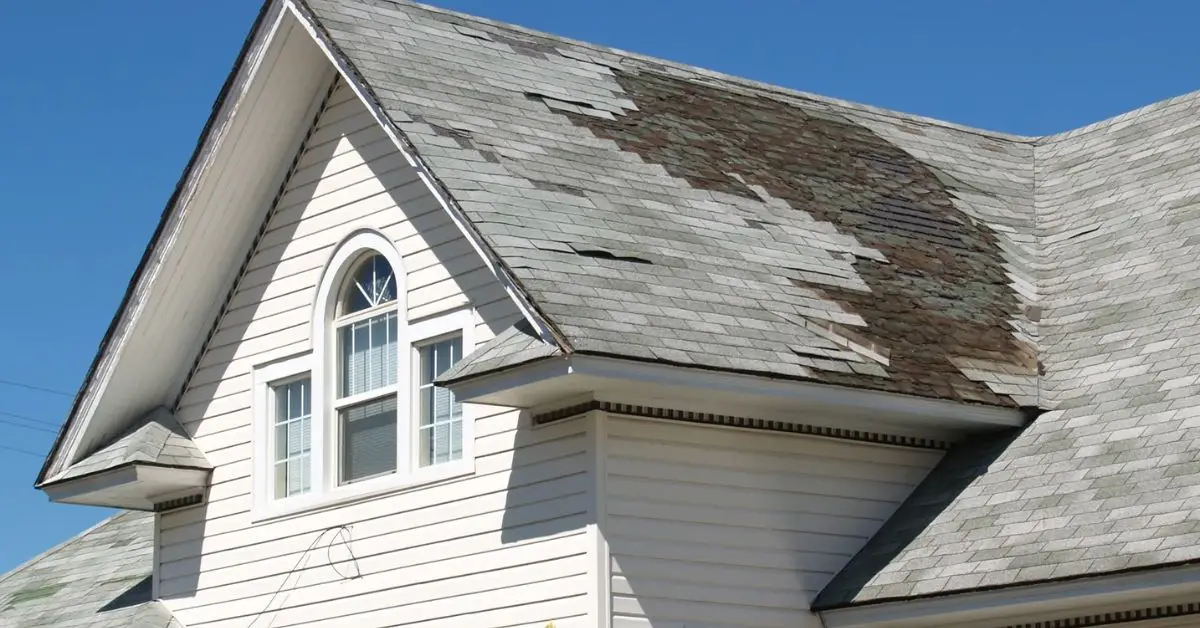
I’ve seen homes where the shingles looked okay from the street, but a quick peek in the attic told a different story: water stains, mold spots, and sagging wood. The thing is, older homes often have layers of roofing stacked over time. Sometimes, people just added a new layer over the old one instead of replacing the whole thing. It saves money upfront but creates major issues later, like improper ventilation or trapped moisture.
Also, older gutters and drainage systems weren’t designed for today’s rainfall patterns. If water isn’t being directed away from the house, it slowly seeps into the foundation. Over years, that turns into foundation cracks, moldy basements, and rotting sills.
You want to ask:
- When was the roof last fully replaced (not just patched)?
- What materials were used? (Slate? Asphalt? Something else?)
- Are there signs of pooling, sagging, or mold in the attic?
- How’s the gutter system working during a heavy rain?
According to Budget Dumpster’s home guide, replacing a roof on an older home can cost anywhere from $8,000 to $25,000 depending on size, pitch, and material. And that’s before addressing water damage underneath.
You might not feel the effects of a bad roof during a sunny home tour—but you will once the first storm hits.
Quick check you can do today:
Stand at the edge of the house and look up. Are gutters pulling away? Are downspouts missing or disconnected? Those are signs the drainage system needs immediate attention.
Don’t assume the top of the house is someone else’s problem. When the roof fails, everything underneath pays the price.
Tip 3: What’s Behind the Walls Matters More Than What’s On Them
It’s easy to fall for exposed brick, vintage wainscoting, or antique light fixtures. But if the wiring behind those walls is from the 1940s—or the pipes are rusting from the inside out—you’re buying a beautiful headache.
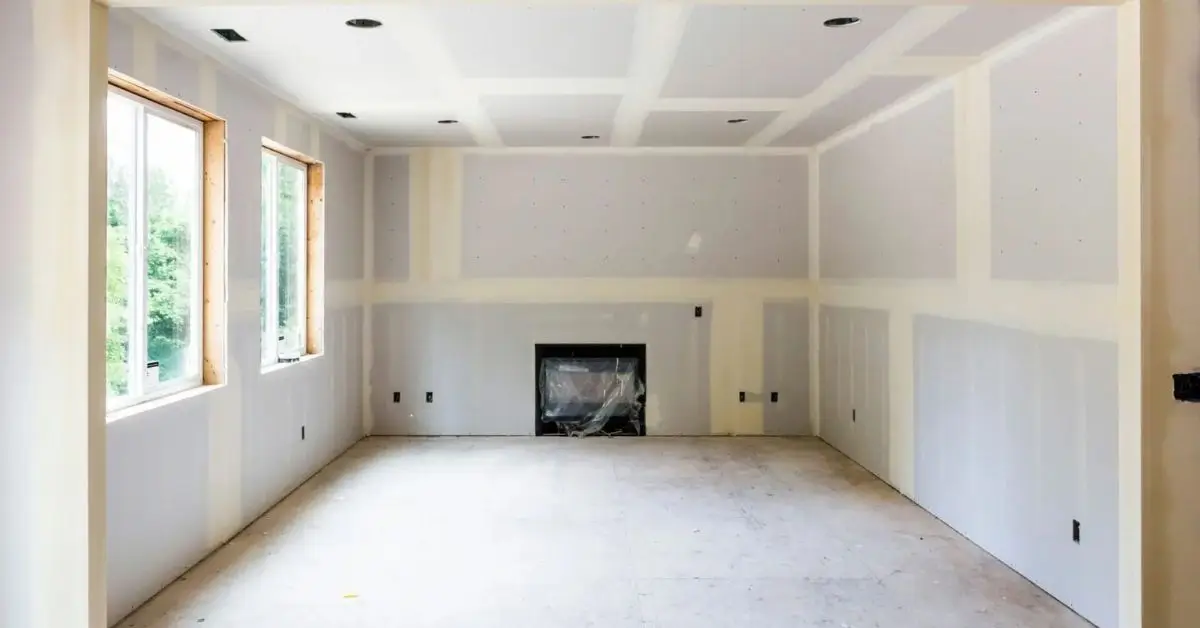
Let’s start with the electrical system. Many older homes still have knob-and-tube wiring, which was standard pre-1950s. It’s not just outdated—it’s a fire risk. Insurance companies often refuse coverage for homes that still have it, or they’ll charge you a steep premium. Also watch out for fuse boxes instead of circuit breakers, missing GFCI outlets near sinks, and buzzing or hot light switches.
The plumbing side isn’t much better. Cast iron or galvanized steel pipes were common in older homes—and both corrode over time. You might not see the issue right away, but over the years, these pipes clog easily, reduce water pressure, and can even burst. I’ve seen cases where people had to repipe their entire house within a year of moving in.
Don’t just rely on a general inspection. Ask your inspector to specifically check:
- Type and age of electrical wiring
- Condition of the breaker panel or fuse box
- Type of plumbing (copper, PEX, galvanized, cast iron)
- Water pressure and discoloration from taps
According to Raleigh Realty, full home rewiring can cost between $8,000 and $15,000, and repiping a house can range from $5,000 to $20,000+ depending on size and layout.
What I always tell buyers is this:
If you have to choose between beautiful fixtures and safe systems—go with the systems. You can always swap out a sink. Rewiring an entire home? That’s not a weekend project.
Before you fall in love with the charm, ask: Can this house safely support modern living?
Tip 4: Don’t Skip the Hidden Health Hazards (Lead, Asbestos, Radon)
Here’s something no one told me when I started looking at older homes: that charming, original paint job? It might contain lead. That textured ceiling? Could be asbestos. And the air in that basement that “just smells old”? That might be radon—a radioactive gas that’s odorless and dangerous.
Let’s break this down.
Lead Paint
If the home was built before 1978, there’s a good chance it has layers of lead-based paint. Even if it’s been painted over, lead dust can still be released when you renovate, sand, or drill into walls. Lead exposure is especially dangerous for kids and pregnant women—and it’s a legal disclosure issue in most places.
Asbestos
Used in insulation, pipe wrappings, floor tiles, and textured ceilings through the 1980s, asbestos is fine when undisturbed—but when it crumbles or breaks? That’s when it becomes a serious lung hazard. DIYing around asbestos without knowing it is one of the biggest rookie mistakes I’ve seen.
Radon
This one surprised me. Radon is a naturally occurring gas that seeps up from the ground—and older homes with basements or crawlspaces are more likely to have it. It’s the second leading cause of lung cancer after smoking, according to the EPA. You won’t smell or see it—you have to test for it.
Here’s what to do:
- Request lead and radon testing before closing
- Hire a certified asbestos inspector if the home is pre-1990s and hasn’t been renovated
- Budget for mitigation if any of these show up—don’t ignore them
These aren’t cosmetic flaws—they’re health risks. And if you plan to renovate, the risk (and cost) goes up fast.
Ask yourself this before signing:
Am I prepared—mentally and financially—to deal with old materials that can actually hurt me or my family?
Don’t just look at what’s charming. Make sure what’s under the surface is safe.
Tip 5: Mold and Pests Don’t Just “Happen”—They Build Up Over Time
One thing I’ve learned from years of walking through older homes: if something smells musty, there’s usually a reason.
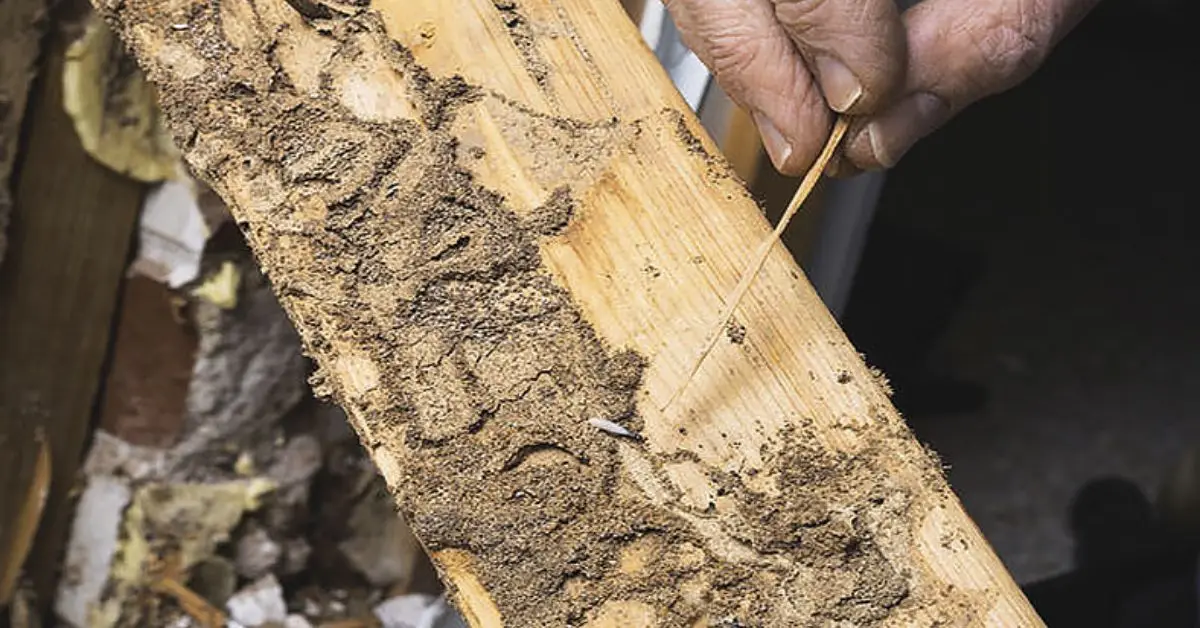
Structural Engineering
Older homes often have beautiful basements, attic spaces, or crawl areas that haven’t been touched in decades. That’s where mold and pests quietly settle in. And the worst part? You usually don’t notice them during the open house.
Mold
You don’t need visible black patches to have a mold problem. All it takes is poor ventilation, old leaky plumbing, or past water damage that was never properly dried. If the home has a musty smell, warped wood, or brown/yellow staining on ceilings or walls—it’s a red flag. Mold isn’t just gross; it can trigger allergies, asthma, and serious respiratory issues.
Termites, Mice & More
Older homes tend to have more entry points—cracks in the foundation, poorly sealed doors, outdated vents. That makes them ideal for pests. Termite damage in particular is sneaky. You might not see it until a baseboard crumbles or a support beam is half-eaten from the inside.
I’ve seen sellers paint over old termite tunnels or run dehumidifiers to mask dampness during showings. It’s not always malicious—sometimes they don’t even know. But you still pay the price if you don’t catch it.
Here’s what to do before buying:
- Always include a pest inspection as part of your offer
- Ask if the basement or attic has ever flooded
- Use a moisture meter during your walkthrough
- Be suspicious of “fresh paint” in just one spot—it’s often hiding something
The mistake people make? Thinking mold or termites are surface-level problems. They’re not. They point to deeper neglect—and that should always be investigated.
Tip 6: Look Past the Flaws — Do the Bones Hold Up?
By this point, you might be wondering, “Why would anyone buy an old house at all?”
Totally fair. But here’s the other side of the story: some older homes are built better than anything on the market today. You just need to know what to look for.
When people say a house has “good bones,” they’re talking about core things that don’t change with time or trends: solid framing, thick plaster walls, real wood floors, well-proportioned rooms, and natural light. These aren’t cosmetic perks—they’re signs of craftsmanship.
Many homes built before the 1970s were constructed with old-growth timber. That wood is denser, stronger, and more durable than modern lumber. You’ll feel it in the way doors close cleanly, floors barely creak, and walls feel solid instead of hollow.
But here’s the key: “good bones” doesn’t mean “good condition.” An older home can be rock-solid structurally, but still have outdated systems, poor insulation, or a terrible layout. So the real win is when you find a place that has both: strong bones and potential to upgrade the rest.
One Reddit homeowner wrote,
“The build quality in our 100-year-old home is far better than our previous new build… We just had to undo 60 years of bad DIY repairs.”
Here’s how to spot real quality:
- Thick door frames that aren’t hollow
- Original woodwork that’s held up well
- No signs of major shifting or sagging in ceilings/floors
- Plaster walls (not drywall) that haven’t cracked under pressure
- Brick or stone foundations instead of cinder blocks
If the structure is solid, you can take your time with cosmetic updates. You can modernize the kitchen. You can swap the lighting. But replacing a weak foundation or crumbling framing? That’s a whole different level of cost and chaos.
Don’t get distracted by wallpaper, paint colors, or dated kitchens. Look deeper. If the bones are strong, the rest is just design—and that’s the fun part.
Tip 7: Budget for the House You Have—Not the One You Hope For
Let me give it to you straight: owning an older home means becoming part homeowner, part caretaker. It’s not a “fix it once and forget it” situation. Things will need attention—year after year.
One of the biggest mistakes I see buyers make? They spend every rupee on the down payment or the kitchen remodel… and forget to budget for ongoing repairs. But old homes have aging parts. Roofs wear out. Plumbing fails. Furnaces die in the middle of winter. If you’re not financially prepared, even small issues feel overwhelming. If you’re trying to buy your first home and feel financially stretched, check out these top 5 saving hacks for buying a home even if you’re broke—they’ll help you build a financial buffer before things go wrong.
How much should you expect to spend?
A smart rule of thumb: set aside 1–3% of the home’s value every year for maintenance and repairs. So if you buy a
$120,000 home, that’s $1,200–$3,600 annually—just for upkeep.
And no, this doesn’t count major renovations. This is just to keep the house running.
My advice?
Build a “house emergency fund” before you close. Don’t wait for things to break—because they will. That fund is what separates confident homeowners from constantly stressed ones.
And if the seller or listing agent says, “Oh, it’s been fine for years”—get receipts. Ask for maintenance records. Ask what was last serviced and when. Trust, but verify.
Tip 8: Old Homes Often Mean Higher Insurance and Stricter Loan Rules
Most people don’t think about insurance or loan issues until the deal is halfway done. But if the home is older—especially 40+ years—you might be in for a surprise.

Let’s talk insurance first.
Older homes are considered higher risk by most insurers. Why? Because their materials are outdated, their systems are less reliable, and repairs—if something goes wrong—are more expensive.
Some insurance companies will flat-out refuse to cover homes with:
- Knob-and-tube wiring
- Cast iron plumbing
- Roofs over 20 years old
- Asbestos or lead present
- No modern circuit breakers or fire safety systems
Even if they do offer coverage, expect to pay more. In some cases, homeowners report paying 50–75% higher premiums for older homes compared to newer ones.
Now the financing side.
If you’re using a conventional loan, the home needs to meet certain livability standards. That means no exposed wires, no safety hazards, and functional systems (heating, plumbing, electric). If the appraiser finds anything major, the lender might:
- Delay your loan
- Require repairs before closing
- Or deny the loan entirely
That’s where renovation loans like the FHA 203(k) or Fannie Mae HomeStyle can help. These are designed for older homes that need work—but they come with strict paperwork, timelines, and contractor approval processes. Not for the faint of heart.
What you can do:
- Call your insurance agent before making an offer—get a quote based on the age, wiring, roof, and plumbing
- Ask your lender if the home qualifies for a standard mortgage
- Know your backup: renovation loans or cash for upfront repairs
Don’t assume financing and insurance will “just work out.” Older homes need more paperwork, more patience—and sometimes, more cash.
Tip 9: Always Ask for Records—And Never Rely on Just One Inspection
Here’s something I learned the hard way: not all inspections are created equal. And sellers? They rarely offer up everything unless you ask.
If you’re buying an older home, your goal isn’t just to find issues—it’s to understand the full story of how that house has been cared for over the years. That’s where maintenance records come in.
Start with this:
Ask the seller for a home maintenance folder or any service records they’ve kept. Even handwritten notes can help—dates of roof repair, furnace servicing, water heater replacements. If they’ve had inspections done in the past (for radon, pests, etc.), ask for those too.
These records show you:
- What’s been updated
- What’s been patched (but maybe not fixed)
- And what’s never been touched
Now, about inspections: don’t stop at the standard home inspection. In older homes, you want specialists.
Here’s who I recommend bringing in (depending on age and condition):
- Structural engineer (foundation or sagging issues)
- Licensed electrician (if the wiring looks pre-1980s)
- Plumber (to scope pipes for corrosion or clogs)
- Pest inspector (not just a quick visual—someone who checks crawlspaces and attics)
- Roofing contractor (for homes with old layers or drainage concerns)
It sounds like overkill, but trust me—one good specialist can save you lakhs in surprise costs later. A general inspector might say “plumbing is old,” but a licensed plumber can tell you if it’ll hold for five years or fail in five weeks.
On House of Brinson, the homeowners wrote:
“We had an inspector, but wish we’d brought in a separate roofer and plumber. It would have changed our decision completely.”
Take this seriously:
If a seller refuses to provide records, or if they downplay your request for more inspections? That’s a red flag. Walk away if you feel pressured to skip due diligence. Also, make sure you avoid these 8 common home buying and selling mistakes—especially when you’re dealing with older homes that need extra scrutiny.
Quick question to ask yourself:
Am I confident in what I know about this house—or just hoping everything’s okay?
Hope won’t hold up a roof. But a second opinion might save you from buying the wrong house.
Tip 10: Know Why You’re Buying—Character, Comfort, or Investment?
Let’s get real: not every home is meant for every person. And not every buyer is meant for an old house.
It’s easy to romanticize vintage trim, original hardwoods, and quirky layouts. But here’s the question most people skip:
Are you buying this house because you love it—or because you think you can fix it and flip it?
Your answer changes everything. And if you’re a student or just starting out, read these 7 things no one tells you about buying a home as a student—they’ll give you clarity before jumping into a big commitment.
If you plan to live in the home long-term…
You need to think in terms of comfort and sustainability. Can you handle gradual upgrades? Are you okay living with imperfections for a while—like drafty windows or sloped floors—while you save for improvements?
You’ll need to balance emotional connection with financial reality. That charming 1920s bungalow may feel like “the one,” but if the roof, wiring, plumbing, and HVAC all need replacing in the first two years, you might be miserable before you even hang your first photo.
If you’re buying as an investment or flip…
That’s a whole different mindset. You need cold math, not warm feelings.
- What’s the resale value after renovations in that neighborhood?
- Will you over-improve the property and outprice the area?
- Are you ready for code compliance and permit delays that often come with old properties?
My honest take?
There’s no “right” answer. But there is a wrong one: buying a home that doesn’t match your lifestyle, budget, or emotional bandwidth.
You should feel proud of the home you choose—but not trapped by it.
So ask yourself:
- Can I afford both the charm and the upkeep?
- Am I okay with things taking longer than expected?
- Will I still love this house when the plumbing fails at 2am?
Because if the answer’s no, it’s okay to walk away. Loving old homes doesn’t mean you’re obligated to buy one.
So, Should You Buy That Older Home?
Let’s recap what you’ve learned—because buying an older home isn’t just about charm, it’s about knowing what you’re getting into and being ready for it.
Here’s what to check before buying:
- The exact year the home was built — and what that tells you about materials, systems, and risk
- The foundation and structure — start from the ground up, always
- The roof and drainage — because water damage doesn’t announce itself until it’s too late
- The electrical and plumbing systems — old pipes and wiring are deal-breakers, not design quirks
- The presence of hazardous materials — lead, asbestos, radon need serious attention
- Mold and pest history — they’re signs of deeper issues, not just “maintenance problems”
- Whether the house has good bones — and if it’s worth building on them
- A realistic maintenance budget — not just for renovations, but for survival
- The impact of insurance and financing — don’t assume you’ll qualify for either easily
- And finally, your own personal goals — why this house, and why now?
Buying an older home can be incredibly rewarding. You can live in something with history, depth, and character. But only if you walk in with your eyes wide open—and your budget a little wider.
Your Turn — Let’s Talk:
- Have you toured or bought an older home recently? What surprised you the most?
- Or—if you’re still searching—what’s the one thing that’s making you hesitate?
Drop a comment or message. I’d love to hear your story.
Want more real tips on buying and maintaining older homes? Visit Build Like New for expert guides and renovation insights.
Disclaimer: This article is for informational purposes only and does not constitute professional financial, legal, or structural advice. Always consult licensed experts before making real estate decisions.

